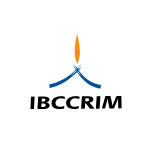O Tribunal do Júri como manifestação da democracia e como garantia fundamental
Visualizações: 264DOI:
https://doi.org/10.5281/zenodo.15046764Palavras-chave:
Tribunal do Júri, Direitos e garantias fundamentais, Democracia, Processo penalResumo
O Tribunal do Júri é uma instituição que caracteriza a única forma de participação popular na administração da justiça brasileira. Além de ser uma garantia fundamental do cidadão prevista no art. 5º da Constituição da República, constitui um modelo de como a justiça criminal no sistema acusatório deve ser: oral, pública e imediata. O júri desempenha um papel educativo significativo, vez que permite que a sociedade compreenda melhor o funcionamento do sistema de justiça, bem como promove uma maior conscientização sobre os direitos e deveres cívicos. Por mais que o modelo brasileiro não esteja indene de críticas, essas precisam ser dirigidas ao fim de aperfeiçoar para um sistema de justiça mais justo, equitativo e humano. O Tribunal do Júri precisa ser protegido não apenas pela sua história, mas também pelo que representa para a democracia.
Downloads
Publication Facts
Reviewer profiles Indisp.
Author statements
- Academic society
- Instituto Brasileiro de Ciências Criminais
- Publisher
- IBCCRIM
Referências
BRASIL. Constituição da República Federativa do Brasil. Brasília: Senado Federal, 1988. Disponível em: https://www.planalto.gov.br/ccivil_03/constituicao/constituicaocompilado.htm. Acesso em: 18 mar. 2025.
BRASIL. Supremo Tribunal Federal. Tema 1.068. Brasília: STF, 2019a. Disponível em: https://portal.stf.jus.br/jurisprudenciaRepercussao/verAndamentoProcesso.asp?incidente=5776893&numeroProcesso=1235340&classeProcesso=RE& numeroTema=1068. Acesso em: 18 mar. 2025.
BRASIL. Supremo Tribunal Federal. Tema 1.087. Brasília: STF, 2019b. https://portal.stf.jus.br/jurisprudenciaRepercussao/verAndamentoProcesso.asp?incidente=5745131&numeroProcesso=1225185&
Downloads
Publicado
Como Citar
Edição
Seção
Licença
Copyright (c) 2025 Prof. Dr. Rodrigo Faucz

Este trabalho está licenciado sob uma licença Creative Commons Attribution-NonCommercial 4.0 International License.
Os direitos autorais dos artigos publicados são do autor, mas com direitos do periódico sobre a primeira publicação e com respeito ao período de exclusividade de um ano. Os autores somente poderão utilizar os mesmos resultados em outras publicações indicando claramente este periódico como o meio da publicação original. Se não houver tal indicação, considerar-se-á situação de autoplágio.
Portanto, a reprodução, total ou parcial, dos artigos aqui publicados fica sujeita à expressa menção da procedência de sua publicação neste periódico, citando-se o volume e o número dessa publicação. Para efeitos legais, deve ser consignada a fonte de publicação original, além do link DOI para referência cruzada (se houver).


 Português (Brasil)
Português (Brasil)
 English
English
 Español (España)
Español (España)












